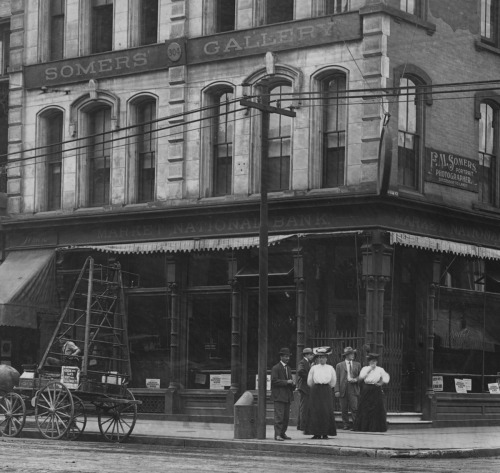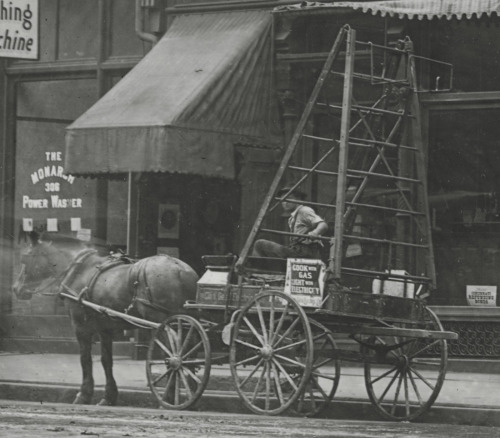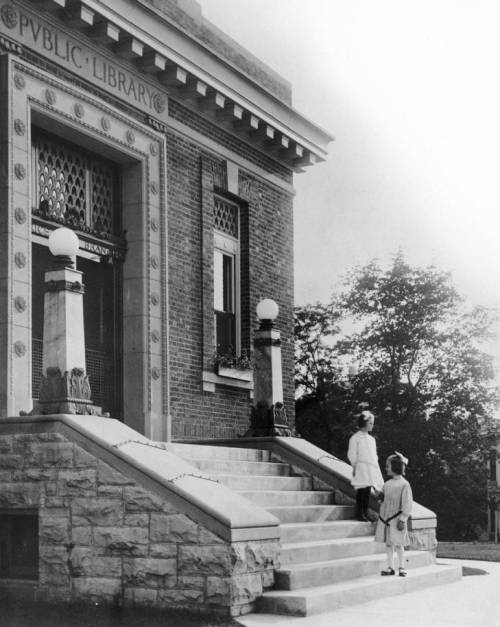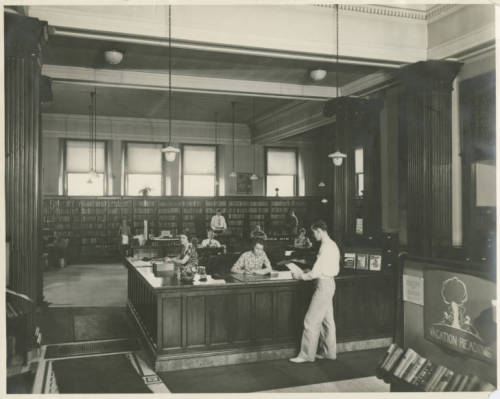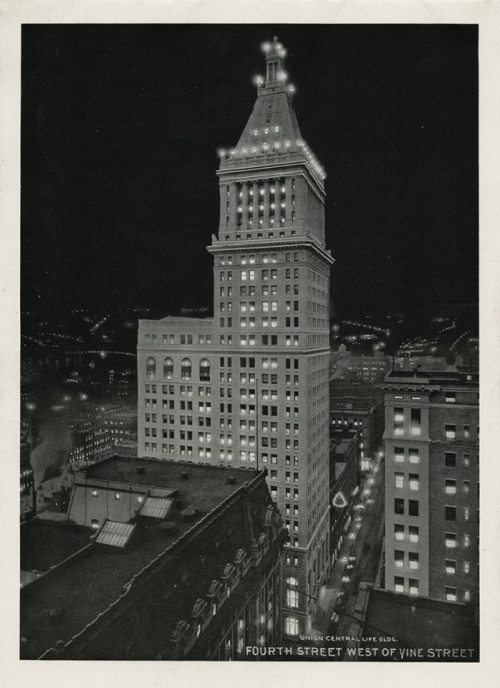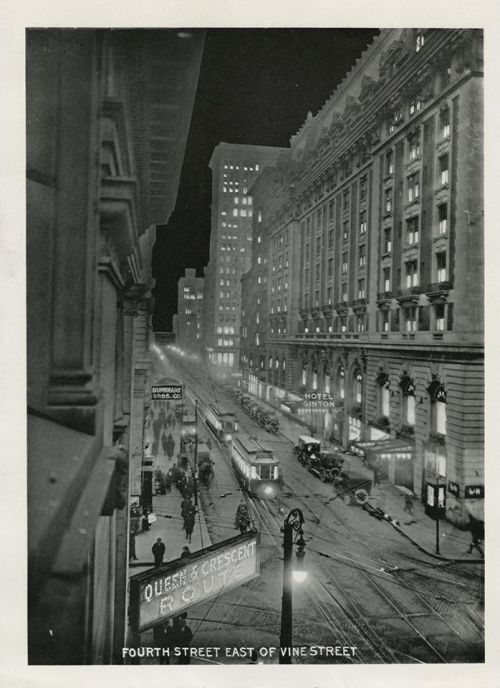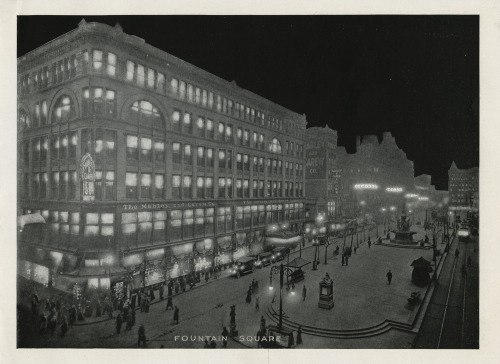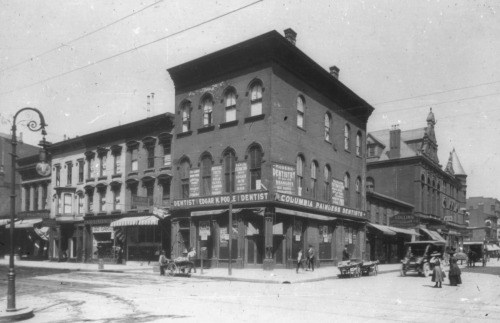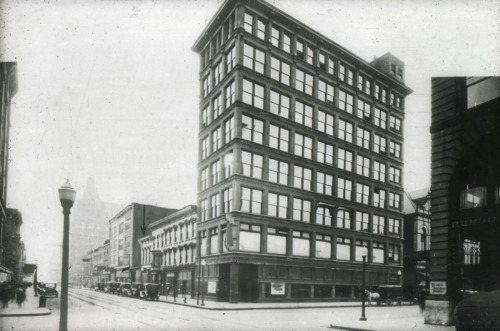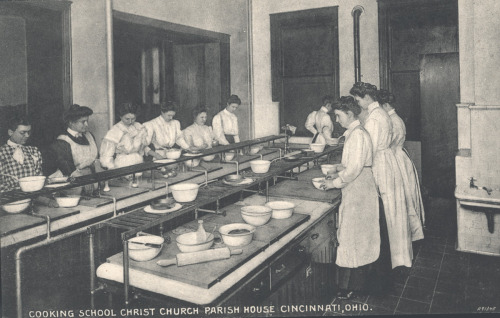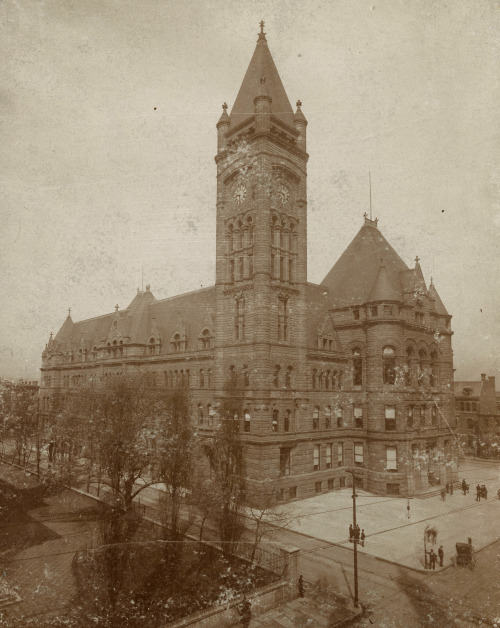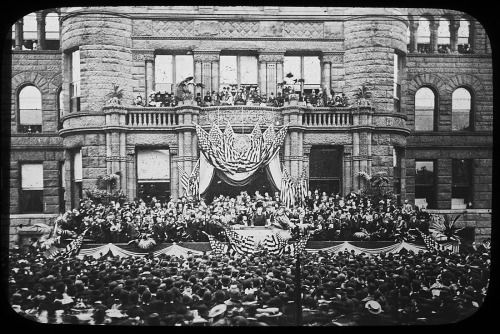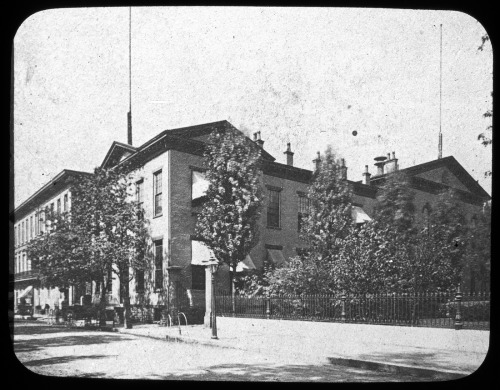#cincinnati architecture
Designed by Samuel Hannaford, the H. W. Derby Building has served as a bank and a photography studio, and is listed in the National Register of Historic Places.
This Italianate building was built in 1887 by publisher and bookseller H. W. Derby. The original “Derby Building” stood at the Southwest Corner of Third and Walnut Streets. Derby made a fortune selling Law books and other educational materials.
Be sure to visit our Digital Library to see more historic Cincinnati buildings.
Post link
Businessman and philanthropist Andrew Carnegie donated and built over 2,500 libraries worldwide between 1883 and 1929. The state of Ohio is ranked fifth in the nation for its number of Carnegie libraries with Cincinnati originally boasting nine libraries total. Today, Cincinnati and Hamilton County Public Library are still operating seven Carnegie branches. Our current Carnegie branches include: Avondale, Corryville, Hyde Park, Northside, Norwood, Price Hill and Walnut Hills. Cincinnati’s first Carnegie to open was Walnut Hills branch in 1906, with the others following soon after. Walnut Hills branch is currently part of Building the Next Generation Library plan and will see many updates including more square footage and greater accessibility.
To see more updates on the Walnut Hills branch, check out https://bit.ly/3BFoPZl
And, to view more historic images of our Carnegie branch libraries, visit our Digital Library!
Post link
Check out this selection of unique photographs from the book “Night in Cincinnati,” by Theodore Newcomb, published in 1915.
Be sure to visit our Digital Library to view more Cincinnati history and unique finds!
Post link
The streetscapes of Cincinnati are always changing. Businesses come and go, old buildings are torn down, and new ones are built.
Top Image:
In 1895, the northwest corner of 7th and Race Streets was dominated by “The Columbia Painless Dentists, which was run by Dr. Edgar M. Poole . One of the large signs posted on the outside of the building reads "Painless Extractions with cocaine air or gas”.
An advertisement for the business placed in a 1907 edition of the Cincinnati Post reads:
“Oftentimes, inspection is forced of the teeth. This is wrong. The teeth should be examined frequently for signs of decay and given the proper attention. We will fill them for 50 cents or extract them painlessly. Our prices are the most reasonable. Call and see.”
The Collins and Bruggemann Co. Art Store can be seen in the one-story building to the right of Columbia Dentists, under a sign that reads “ Collins and Bruggemann Pictures and Frames”. The business moved to 4th street when these building were torn down.
The distinctive Lincoln Club building can be seen at the far end of the block on 8thStreet.
Visit our Cincinnati History Slide Collection to see more images like this.
Middle Image:
Located on the corner of Race and 8th, the Lincoln Club of Cincinnati was a Republican social organization. Founded in 1879, the club counted many prominent citizens as members, including Charles Fleishmann, who served as a Vice President, and William Howard Taft.
Their headquarters building at 8th and Race was built in 1886, and designed by Samuel Hannaford.
The three story neo-Romanesque structure was remodeled in 1895. After the Lincoln Club folded, the Rudolph Wurlitzer Company purchased the building and leased space to the Cincinnati Automobile Club. The building was razed in 1929, and the site remained a parking lot until the Garfield Tower was built in the late 1960’s.
This image is from Kraemer’s picturesque Cincinnati.
Bottom Image:
The northwest corner of 7th and Race Streets in 1921. Originally known as the Robertson Building, this 8-story building was built circa 1910 by the Robertson Realty Company at a cost of $90,000. In 1911 it was sold to Jefferson Livingston, the owner of the Snyder Preserve Company, who renamed named the building after himself. The Pearl Market Bank purchased the entire Livingston Block for $325,000 in 1921.
View the original slide image here.
Post link
Founded in 1817, Christ Church was the first Protestant Episcopal church in Cincinnati. Founded by a group of prominent citizens that included future president William Henry Harrison, and Dr. Daniel Drake, the church is one of the City’s oldest institutions.
Here is a brief history of the church, as excerpted from the 1888 publication “The centennial review of Cincinnati: one hundred years”:
"The first Protestant Episcopal church in Cincinnati was organized through the efforts of Rev. Philander Chase, afterward Bishop Chase, at a meeting held at the house of Dr. Drake, at which the parish was organized with twenty-two members, including General Harrison, Griffin Yeatman, Harvey St. Clair, Jr., Dr. Drake, Jacob Baymiller and other prominent citizens of that day. The first meeting was held in the cotton factory on Lodge Alley, between Fifth and Sixth streets, and afterward in several buildings, the Rev. Samuel Johnson being the minister, and in I8I8 the Baptist building on West Sixth street was secured for the services, and was afterward bought by the church. In 1821 the church was regularly incorporated under the title of the Episcopal Society of Christ Church, and remained under the rectorate of Rev. Mr. Johnson until 1828, when he went to the newly organized parish of St. Paul’s, and was succeeded in Christ Church by the Rev. B. P. Aydelott. In November, I833, the lot now occupied by Christ Church, on the north side of Fourth street, between Sycamore and Broadway, loo X I30 feet in area, was bought for $9,000, upon which was built the structure still used by the church, the plan of the old Stepney Church, one of the notable parish churches of London, being adopted as a model. There are now seventeen churches of this communion in the city.”
Explore more Cincinnati history by clicking HERE to access our Lantern Slides Collection on our Digital Library!
Post link
One of the most iconic structures in Cincinnati is City Hall. The Richardson Romanesque style of architecture, designed by Samuel Hannaford (who designed Music Hall), contains four and a half stories and a nine story clock tower. This one of a kind building earned its place in the National Register of Historic Places in 1972. Scroll through the images below to learn more about City Hall.
Click the link below to visit our Digital Library and learn more about Cincinnati’s historical buildings.
https://digital.cincinnatilibrary.org/digital/
Post link


